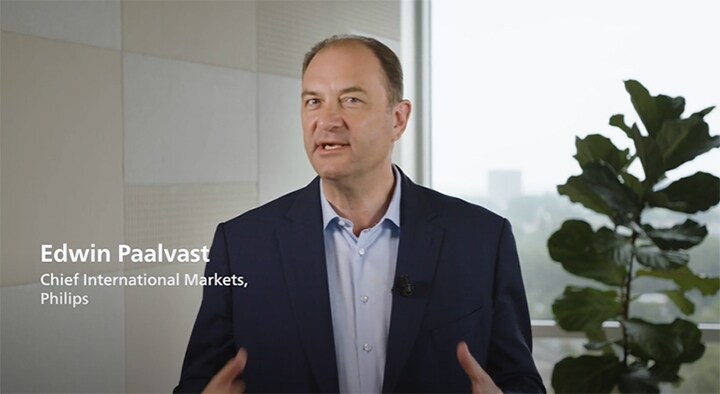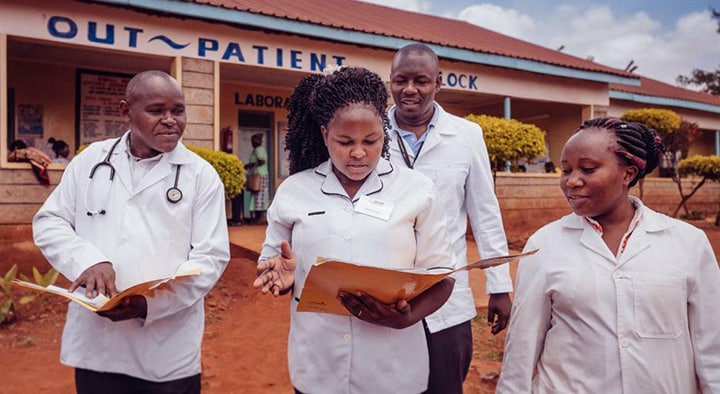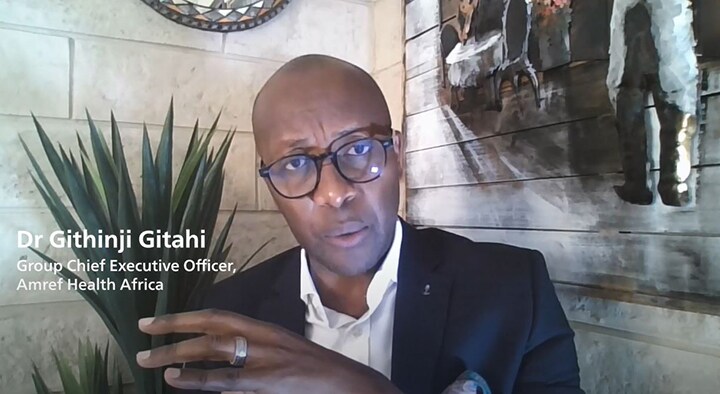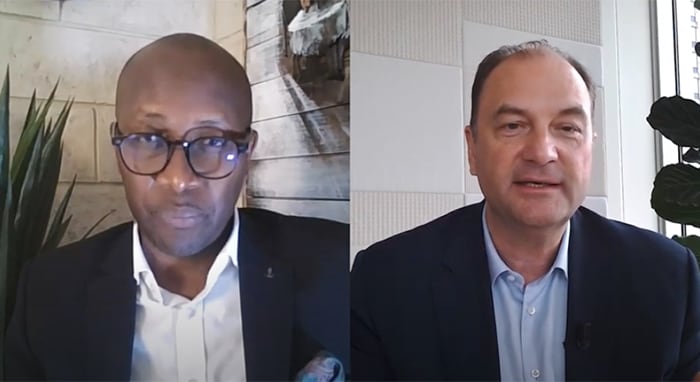7 Secrets to transformative partnerships
Sep 03, 2021 - Reading time 8-10 minutes
Philips’ partnership with Amref Health Africa, the largest African-based non-governmental organization, has been one of our most successful and longstanding. Since teaming up eight years ago, we’ve worked together to drive and improve healthcare access in Africa. Our Partnership for Primary Care represents the first scalable public-private partnership model for primary care in Africa, realized through shared passion, commitment and funding.
In August 2020, Edwin Paalvast joined Philips as Chief of International Markets and member of the Executive Committee. Paalvast is responsible for strategic partnerships within Philips markets (with the exception of North America and Greater China), including our long-time partnership with Amref, led by Dr. Githinji Gitahi, Amref Health Africa’s Global Chief Executive Officer. The two recently sat down for their first meeting to reflect on what makes this enduring collaboration so special. Besides getting to know each other, the leaders discussed past learnings and future plans to transform healthcare delivery in Africa.
Philips and Amref have learned much from each other during the past eight years and have achieved in the partnership considerably more than we could have alone. In addition to a solid track record of delivering on our shared mission of achieving Universal Health Coverage, our partner relationship has helped each of us better adapt and thrive within the rapidly changing health space.
Here are seven takeaways for building lasting and impactful partnerships:
1. Choose partners with complementary strengths
Whether public or private, organizations bring unique skills and resources to the table, and complementary strengths make for smoother partnerships. Amref’s deep understanding of community health systems, strong local brand, advocacy expertise and longstanding relationships with local governments have better positioned Philips to leverage our health technologies, business expertise and know-how for building solutions in a complex environment. By combining forces, we can achieve greater impact and scale and have reached areas and segments we might not have alone.
2. Engage as equal partners from the get-go
Differing areas of expertise make dividing up roles a more organic process. From initial discussions and planning meetings, both parties need to show up with equal engagement. If one partner wants to sit alone in the driver’s seat or push a certain agenda, it can sabotage well-intended partnerships and stifle progress or dissolve the partnership altogether. This wastes the resources and time invested in the project. Ensuring each partner has an equal seat at the table helps better position the partners to communicate openly, find solutions and deliver meaningful outcomes to the people and communities counting on them. Going in as equal partners ups the mutual respect between partners while also building a stronger level of trust among stakeholders.

We know there is enormous potential for digital innovation to increase access to care.
Edwin Paalvast
Chief of International Markets, Royal Philips
3. Leverage partner strengths to tackle challenges
“We know there is enormous potential for digital innovation to increase access to care,” says Paalvast. “But often we face challenges that aren’t specifically technical, such as lack of infrastructure, lack of resources or trained staff and changes to existing ways of working. To achieve better community health outcomes in Africa – such as improving the quality of maternal care – requires not only delivering technology innovations, but also empowering community healthcare workers and increasing local employment opportunities. Those last two were hurdles we may not have been able to overcome without Amref.” Since the beginning of the collaboration in 2013, Philips and Amref have worked closely together to provide affordable, community-centered solutions that help bridge health system gaps on the African continent.
4. Develop scalable solutions
Delivering one-off projects isn’t where the impact is. For lasting healthcare impact, it’s necessary to unlock investments and ensure that the funded health services are efficient, effective and affordable. Solutions may need to be tested and refined in pilot settings, but impact requires solutions and business models that can readily be scaled. In Makueni County, where we piloted the Partnership for Primary Care business model (jointly developed by Amref and Philips), the outcomes demonstrated that good quality healthcare could be delivered in a scalable and financially sustainable way without incurring financial difficulties for the people in the communities. Pilot results: 90% more people know where to find care, 30% more women can access maternal care and almost 80% more women deliver their babies in a facility. That’s an incredible achievement.

5. Build a big tent
Holistic solutions require collaboration beyond the partnership. This is especially true in the health sector. From initial funding to ongoing training, sustainable business models require collaboration. Stay open to the various players in the ecosystem that can help drive the transformation. Not only does that include other organizations, but also employees and volunteers. In Philips’ partnership efforts with Amref, enthusiasm and support from Philips employees had a big impact on both funding and project momentum. Volunteerism and participation in fundraising events, such as a six-day mountain bike experience in Tanzania, not only raised money for the cause but also created awareness, energized the effort, and strengthened Philips as an organization.
6. Be open to radical transformation
Over the years we’ve been partnering on Universal Health Coverage, we’ve had to come back to the table several times and rethink our approach. The result has been that our partnership has grown from a transactional to a strategic one. Done well, partner relationships give organizations enormous transformative power, not only to achieve the stated partnership goals, but also to grow and innovate as organizations. Our relationship with Amref has helped Philips evolve into the purpose-driven, customer-focused company we are today. The best partnerships deliver strategic value to both parties.

Working together, we have improved community health in several African countries, and the trust we’ve built up over time sets the foundation for new projects that have greater scope, reach and impact.
Dr. Githinji Gitahi
Group CEO, Amref Health Africa
7. Trust takes time, but the investment pays off
“If you want to go fast, go alone. If you want to go far, go together,” says Dr. Githinji Gitahi. “Working together, we have improved community health in several African countries, and the trust we’ve built up over time sets the foundation for new projects that have greater scope, reach and impact. We’re excited to be developing the first Public Private Partnership, the Partnership for Primary Care. The private sector has until now played a marginal role in public primary care, but this unique example combines corporate business acumen with the public-sector’s understanding of local communities in a joint value proposition that has the potential to radically transform healthcare delivery and expand access to quality, affordable healthcare.”
After eight years of delivering impactful projects together, Amref and Philips continue to raise the bar for what we can achieve through this partnership, as we progress together toward the ultimate goal of Universal Health Coverage.









